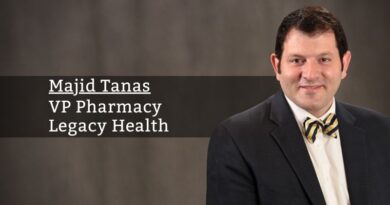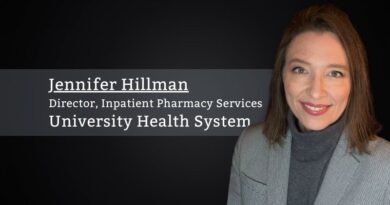Purchasing Optimization and Drug Shortages
By Elie M. Bahou, SVP/Chief Pharmacy Officer, Providence
As healthcare reimbursement has changed over time, Providence has also had to evolve to keep up with the various payer models. Providence is a non-profit entity, and as such, does not operate like a highly competitive insurer or for-profit entity. Instead, our decision models are based on the mission and quadruple aim
Problem
On any given day, a single buyer in a facility may have to address a time-consuming drug shortage while also ensuring they are buying the most cost-effective medication that complies with regulatory and safety requirements. It became readily apparent that we need a centralized procurement support team that is supported by a standardized inventory management tool that is specific to pharmacy during the onset of the COVID-19 crisis. In huddle after huddle, each region would have to report their obsolete inventory based on the last time they walked the shelves and manually aggregate the data via spreadsheets. We have been asked to envision by leadership where we can continue the gains and changes in practice that we have realized from COVID-19, and this is the number one strategy the pharmacy teams have requested to help them do their jobs more effectively and, in turn, help our patients and caregivers.
These are the primary problems we face:
- No centralized inventory system. Consider the way in which supply chain can manage their inventory centrally. We need a different tool to do that for pharmacy, given the complexities of our regulations. But with these tools, we can transform our pharmacy procurement systems to allow for the right balance between system coordination and regional oversight.
- Buyer knowledge is learned on the job by walking the shelves. It is currently a manual art form rather than a rigorous data-driven process. The process involves repetitive walking the shelves, a very inefficient process because of the limited tools.
- We have significant opportunity to reduce our pharmaceutical waste.
Currently, our ordering processes are fragmented and disconnected. We use spreadsheets to keep ourselves organized. With over 50 locations and significant levels of complexity, things do inherently unwind if the time-consuming manual oversight process is not applied. This is a major rate-limiting factor in our ability to search for new savings opportunities.
Transformation opportunity
We realized our ability to continue to generate savings would diminish significantly if we did not have automated tools to assist us. By using technology that can provide us with a virtual view of all inventories across the entire system, we would address drug shortages and maintain pharmaceutical inventory levels that match anticipated utilization. The implementation of hardware and software from two vendors will help us coordinate our complex work in much more efficient ways.
By implementing the two-vendor solution, our system has an opportunity to address the quadruple aim through one project. Starting with lower costs, the conservative estimates by finance have estimated significant savings over seven years. The patient experience will be improved by ensuring we have the necessary medications via better drug shortage management practices and perpetual inventory management. The caregiver will experience optimized workflows and elimination of manual processes. Lastly, by having better oversight of our perpetual inventory, we anticipate improved outcomes because we will reduce the need for workarounds or alternative therapies due to medications in short supply.
Henceforth, this software will aggregate our purchases and evaluate savings opportunities, while also evaluating the complex landscape associated with regulatory requirements. This system will evaluate our external spend to significantly higher levels and allow us to orchestrate coordinated savings opportunities in a effective way than our current manual methods.
The complex implementation plan occurs over two years with staging in over 50 locations. The plan was designed around pre-existing projects for known EMR go-lives or other IS conversions that could bring additional risk or complexity to the project.



